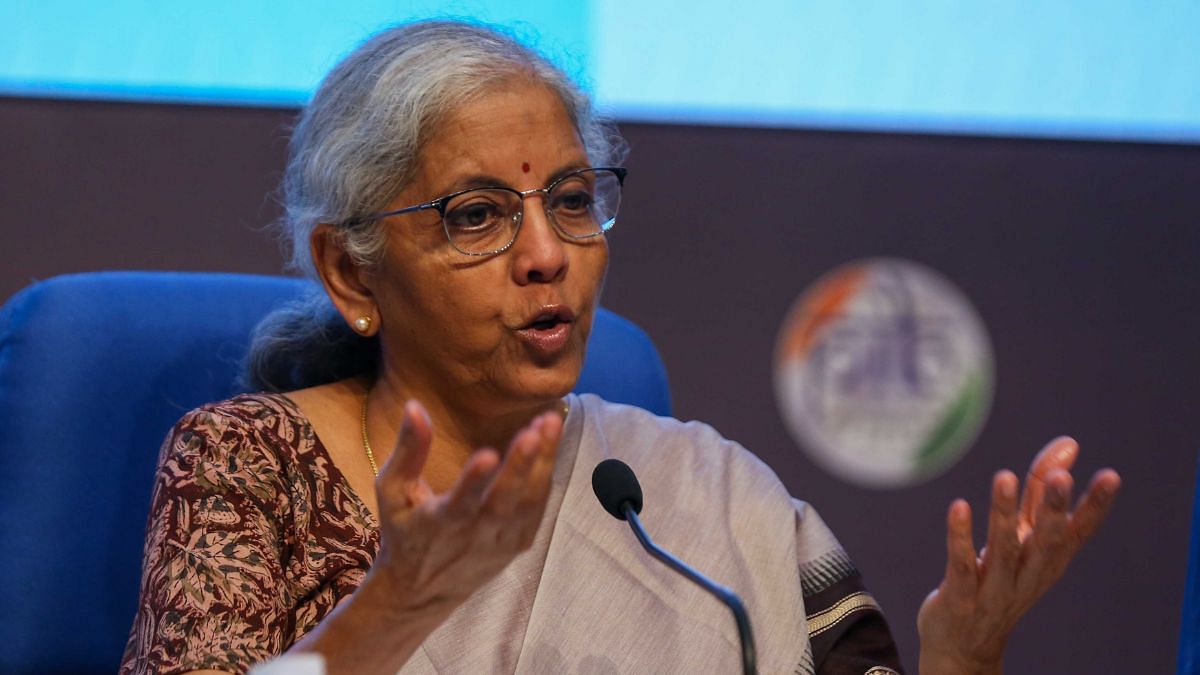New Delhi: Finance Minister Nirmala Sitharaman, presenting the Union Budget 2024-25 Tuesday, announced a full exemption from customs duties for three more cancer drugs — a move that will likely benefit thousands of cancer patients.
Though Sitharaman did not specify the names in the budget speech, government sources told ThePrint that these drugs are trastuzumab deruxtecan, osimertinib, and durvalumab.
Trastuzumab deruxtecan, sold under the brand name Enhertu, is used in treating specific breast, stomach and lung cancers, and osimertinib, sold under the brand name Tagrisso, is used in treating advanced cases of certain lung cancers. On the other hand, Durvalumab, sold under the brand name Imfinzi, works for several types of malignancies involving the lungs, endometrium, and biliary tract.
This announcement on these drugs came a year after the finance ministry, in March 2023, announced there would be no basic customs duties on Pembrolizumab (Keytruda), a cancer drug for several types of malignancies by pharma giant Merck.
The ministry had also announced an exemption from customs duties for other drugs or food for special medical purposes imported for personal use for treating rare diseases as listed under the National Policy for Rare Diseases, 2021.
Before that, there was an exemption on custom duties for specified drugs used in treating only one rare disease — spinal muscular atrophy or Duchenne muscular dystrophy.
The drugs and medicines not under the exemption generally attract basic customs duties of 10 percent, with some categories of lifesaving drugs or vaccines attracting a concessional rate of 5 percent.
Sitharaman, in her budget speech, also proposed changes in the basic customs duties on X-ray tubes and flat panel detectors for use in medical X-ray machines under the phased manufacturing programme, aiming to synchronise these items with domestic capacity addition.
This move will likely result in price reductions for X-ray machines and may subsequently help patients save costs.
“We are thankful to the government for the reduction in duty on the import of components of X-ray equipment until their production starts in India. The move will enable continuity in investment in efforts to become a manufacturing hub of X-ray equipment globally,” said Rajiv Nath, forum co-ordinator for the Association of Indian Medical Device Industry, a network of indigenous medical device makers.
However, overall, there was no announcement of launches of new initiatives or impetus to any ongoing projects in the healthcare sector.
Former Union health secretary Sujatha K. Rao said she is disappointed with the health budget, though not surprised.
“Only a government bold enough to bring structural changes to our public financial management can ensure health and education get the funds these sectors deserve. Till then, we will need to settle with incremental tinkering,” Rao said.
“It’s sad as people need good healthcare services and that privatisation and corporate hospitals are for addressing healthcare needs is simply an inadequate response,” Rao added.
Also read: With AIIMS Delhi set to train surgeons in face transplant, a look at the procedure & risks involved
Status quo for the health sector
The government has now allocated Rs 90,958.63 crore for the Union health ministry — Rs 87,656.9 crore for the health and family welfare department and Rs 3,301.73 crore for the health research department.
Cumulatively, the allocation is just marginally higher than the Rs 90,657 crore proposed for the health ministry in the interim budget presented in February this year.
So, the health ministry has an allocation just 12.96 percent higher than the Rs 80,517.62 crore 2023-24 revised budget estimates last year — just enough to cover inflation.
The economic survey, tabled by the government in the Parliament Monday, showed that the combined expenditure by the government, both at the Centre and in the states, in the health sector, as a percentage of the Gross Domestic Product (GDP), rose from 1.4 percent in 2017-18 to 1.9 percent in 2023-24. It is far less than the target set by the National Health Policy, 2017, which aimed to take government expenditure on health to 2.5 percent by the GDP.
Public health specialists pointed out that the outlook towards health does not seem enthusiastic.
“While the allocation to health, family welfare, and health research shows a modest increase compared to the previous year’s revised estimate, it may fall short of the proposed health agenda of strengthening the surveillance of zoonotic infections, controlling antimicrobial resistance, upscaling primary care services and strengthening district hospitals,” said Dr K. Srinath Reddy, an epidemiologist and cardiologist and the former president of the Public Health Foundation of India, a leading health research organisation.
He said with the proposed addition of HPV vaccination in girls to prevent cervical cancer, the immunisation programme for children — which still needs to cover some ground to become “truly universal” — will require more resources now.
“The proposal to include elderly persons in the Ayushman Bharat- Pradhan Mantri Jan Aarogya Yojana (a health insurance scheme for the poor, providing insurance coverage of up to Rs 5 lakh) led to expectations that the scheme would see a greater increase than the seven percent provided by the budget,” Reddy said.
While the proposal to exempt three imported cancer drugs from customs duty is welcome, the government should ensure price control on drugs through pooled public procurement, said Reddy.
The budget’s emphasis on youth employment must reflect in increased opportunities for entering an expanded health workforce to increase the outreach, quality and affordability of health services, he added.
Some long-standing healthcare sector demands remain unaddressed in the budget, said Ashutosh Raghuvanshi, managing director and chief executive of Fortis Healthcare.
“These include increasing the GDP spending on healthcare to 2.5 percent, prioritising healthcare as a national issue, promoting medical value travel in India, among others,” Raghuvanshi said.
(Edited by Madhurita Goswami)
Also read: Focus on 113 home-grown, affordable medical devices to cut down import dependence, says govt

